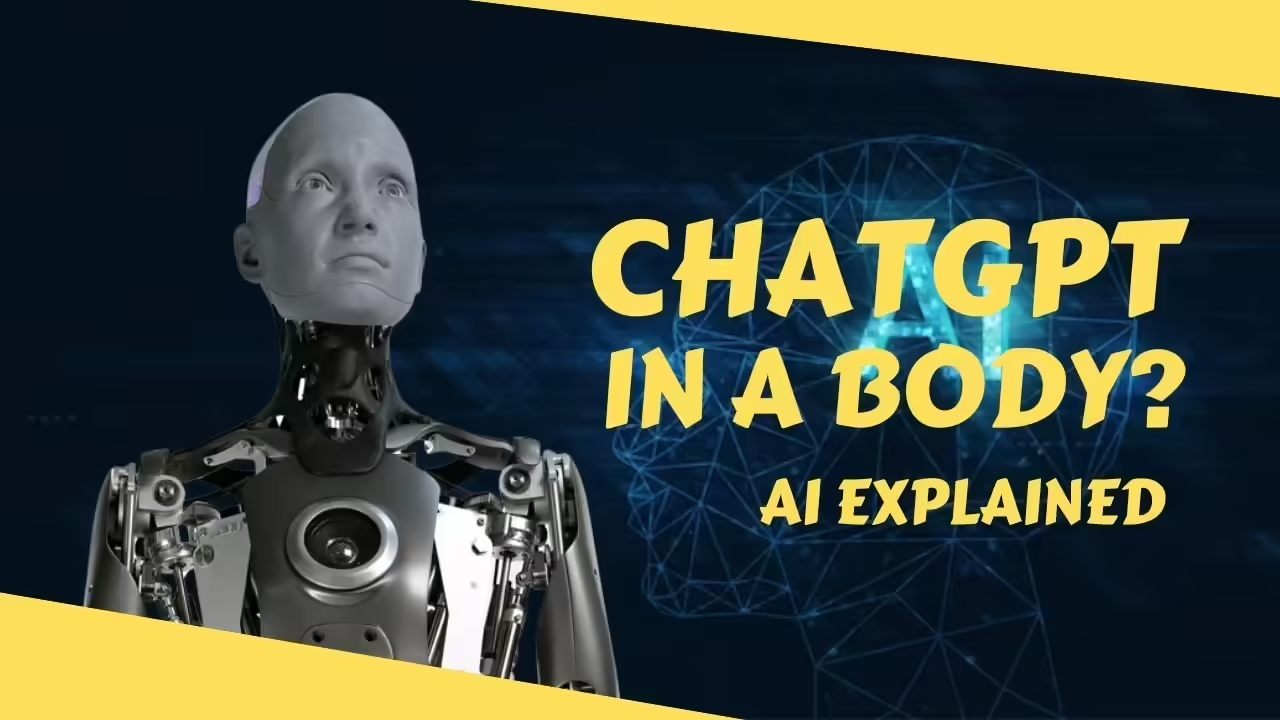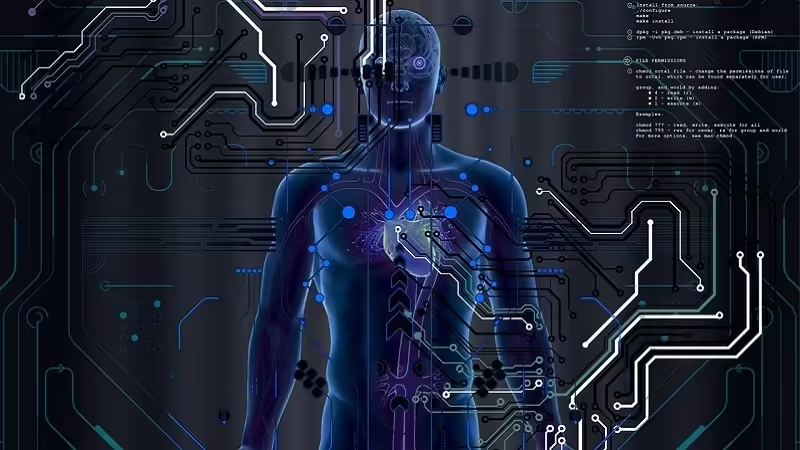
In the constant pursuit of enhancing human capabilities and improving quality of life, the integration of artificial intelligence (AI) and robotics has emerged as a fascinating and promising field. One of the most intriguing aspects of this convergence is the Brain-Robot Integration, which seeks to create a symbiosis between the human mind and machines. In this article, we will explore the intersection of artificial intelligence, robotics, and how platforms like ChatGPT play a crucial role in this technological frontier.
Convergence between Artificial Intelligence and Robotics: A Brief Overview
Artificial intelligence and robotics have evolved independently for decades, but recently, we have witnessed an increasingly close fusion between both disciplines. The ability of machines to learn, adapt, and make autonomous decisions has led to extraordinary advances in creating smarter and more versatile robots. From industrial robots to personal assistance devices, the synergy between AI and robotics is shaping a future where human-machine interaction reaches new levels.
Brain-Robot Integration: Toward a Perfect Symbiosis
Brain-Robot Integration represents a bold step towards direct collaboration between the human mind and machines. In this approach, the development of brain interfaces is sought to enable individuals to control and communicate with robots using brain activity. This involves not only the ability to direct physical actions but also the transmission of information in both directions, opening the door to immersive experiences and a deeper understanding of the human mind.
The Role of Artificial Intelligence in Brain-Robot Integration
In this context, artificial intelligence platforms play a crucial role, and ChatGPT stands out as a prominent example. By leveraging advanced generative language models like the one used in ChatGPT, researchers can facilitate bidirectional communication between humans and robots. The ability to understand and generate coherent and contextual text enables a more natural and fluid interaction between the user and the machine, paving the way for more effective integration.
ChatGPT and the Brain-Robot Interface: A Practical Example
Imagine a scenario where a user wants to control a robotic arm to perform specific tasks. Using a brain-robot interface, the user could think about the desired actions, and ChatGPT, acting as an intelligent intermediary, would interpret those brain signals and translate intentions into commands for the robot. Simultaneously, ChatGPT could provide contextual feedback and facilitate a natural conversation about user preferences and real-time adaptation of robot tasks.
Technological Development: ChatGPT Brain Implants
At the forefront of brain-robot integration, brain implants emerge as fundamental technologies enabling direct communication between the human mind and machines. In this context, ChatGPT brain implants represent a significant milestone in the fusion of artificial intelligence with the brain-robot interface. Below, we will explore key details of this innovative technology.
Technology of ChatGPT Brain Implants: A Direct Link to the Human Mind
ChatGPT brain implants are designed to establish a direct connection with the human brain, enabling bidirectional transmission of information between the mind and the ChatGPT system. These implants leverage advanced neuroengineering and neuroscience techniques to record and decode relevant neural signals, allowing an effective interface between brain activity and artificial intelligence.
The core technology of these implants is based on high-density electrodes, capable of accurately recording the electrical activity of neurons. These electrodes are strategically placed in areas of the brain related to thought generation, allowing the capture of specific signals for processing.
Adaptation Process of ChatGPT for the Brain-Robot Interface
The adaptation of ChatGPT for the brain-robot interface involves a series of complex steps aimed at ensuring a smooth and efficient interaction between the user and the AI-controlled robot. These steps include:
Capture and Decoding of Neural Signals:
- Brain implants capture neural signals generated by the user while thinking about specific commands for the robot.
- These signals are transmitted to a decoding system, which interprets the user’s intention and translates it into understandable commands for artificial intelligence.
Adaptation of the ChatGPT Model:
- The ChatGPT model is adjusted to understand and process the decoded signals coming from the brain implant.
- Deep learning algorithms are implemented to enable ChatGPT to effectively interpret instructions based on the user’s brain activity.
Generation of Responses and Feedback:
- ChatGPT, now adapted to interpret brain signals, generates coherent and contextually relevant responses.
- A continuous feedback loop is established to improve accuracy and understanding as the system learns from brain-robot interactions.
Robot Control and User Feedback:
- Commands generated by ChatGPT are transmitted to the robot to execute the corresponding actions.
- Simultaneously, ChatGPT provides contextual feedback to the user, enabling rich bidirectional communication.
This adaptation process is carried out in a highly controlled environment and adheres to rigorous ethical and safety standards to ensure user integrity and privacy.
Benefits and Potential Applications of Brain-Robot Integration with ChatGPT Brain Implants
The integration of ChatGPT brain implants into the brain-robot interface opens up a range of benefits and applications that have the potential to transform various sectors of society. From advancements in medicine to improvements in industrial efficiency and space exploration, this technology promises to contribute significantly to progress and overall well-being.
Advanced Medicine:
- Neurological Rehabilitation: The brain-robot interface with ChatGPT facilitates the rehabilitation of patients with neurological injuries by allowing more precise control of assistive devices.
- Prosthesis Control: Individuals with prosthetic limbs can experience more natural and precise control through direct connection with their brain implants, enhancing their quality of life.
Industry and Manufacturing:
- Intelligent Automation: The application of the brain-robot integration in industrial settings enables the automation of complex and hazardous tasks, improving efficiency and reducing risks for workers.
- Robot Training: The brain-robot interface facilitates quick and adaptable training of robots to perform specific tasks according to the preferences and skills of human operators.
Space Exploration and Hostile Environments:
- Remote Operation of Space Robots: Direct connection between the human mind and robots in space allows more precise and adaptable remote operation in space missions.
- Exploration in Hazardous Environments: Brain-robot integration can be applied in the exploration of dangerous environments such as planets, underwater environments, or natural disasters, where direct human intervention could be risky.
Assistance in Disabilities and Special Needs:
- Communication for Non-Verbal Individuals: For people with disabilities affecting verbal communication, the brain-robot interface allows the expression of thoughts and desires more effectively.
- Enhanced Mobility: Individuals with reduced mobility can benefit from mind-controlled robotic systems to improve their movement and autonomy.
Education and Learning:
- Immersive Educational Experiences: The brain-robot interface offers practical and engaging learning experiences by allowing students to interact directly with virtual environments or educational devices controlled by robots.
- Support for Diversity in Education: It facilitates the participation of people with disabilities, creating a more inclusive and accessible educational environment.
Case Studies and Recent Advances in Brain-Robot Integration with ChatGPT Brain Implants
Brain-Robot Integration with ChatGPT brain implants has been the subject of innovative research and exciting projects that have led to notable advances in recent years. The following are some case studies and recent discoveries that have significantly contributed to this constantly evolving field.
BrainGate: Prosthesis Control Through the MindThe BrainGate project, led by researchers at Brown University, has been at the forefront of research in brain-robot interfaces. They have achieved significant breakthroughs in the direct connection between the brain and prosthetics, allowing individuals with paralysis to perform everyday tasks through the mental control of robotic devices. Studies have demonstrated the feasibility of using brain implants to control robotic arms with surprising precision, offering new hope for those with severe motor disabilities.
Neuralink: Elon Musk’s Brain-Machine InterfaceNeuralink, the company founded by Elon Musk, has been in the spotlight for its efforts to develop an advanced brain-machine interface. While still in the experimental phase, Neuralink has made significant advances in the direct connection between the brain and technology. They have demonstrated the ability to read and decode brain signals, as well as stimulate neurons to correct neurological deficiencies. These advances suggest revolutionary potential for the brain-robot interface, opening the door to applications ranging from medical assistance to cognitive enhancement.
Walk Again Project: Restoring Mobility with ChatGPTThe Walk Again Project has explored the use of the brain-robot interface to restore mobility in individuals with spinal cord injuries. In collaboration with international researchers, this project has demonstrated how the combination of brain implants and ChatGPT can enable paraplegic individuals to control robotic exoskeletons for walking. This breakthrough not only has significant implications for rehabilitation but also highlights the potential of brain-robot integration in improving the quality of life for those with motor disabilities.
Computational Neuroscience Research: Advances in Brain CommunicationComputational neuroscience research has propelled advances in understanding and decoding brain communication. Researchers have used advanced deep learning models, including models like ChatGPT, to analyze complex patterns of neuronal activity. These studies have paved the way for improving the accuracy and speed of interpreting brain signals, bringing closer the reality of effective communication between the human mind and artificial intelligence.
Future Perspectives and Emerging Developments in Brain-Robot Integration with ChatGPT Brain Implants
Brain-Robot Integration with ChatGPT brain implants presents an exciting horizon of possibilities, and future perspectives suggest significant advances that could profoundly transform the interaction between humans and machines. Speculating about the future, we identify several areas of research and potential emerging developments that could shape the course of this innovative technology.
Improvements in Precision and Speed of the Interface:
Future developments are expected to focus on increasing the precision and speed of the brain-robot interface. This could be achieved through advances in the miniaturization of brain implants, allowing the capture of neural signals with even higher resolution. Additionally, optimization of decoding algorithms and the processing capacity of models like ChatGPT could accelerate the translation of user intentions into commands for robots with minimal latency.
Expansion of Applications in Medicine and Rehabilitation:
In the medical field, brain-robot integration could expand to new applications in medicine and rehabilitation. It is anticipated that ChatGPT brain implants could be used for more personalized treatments, such as adaptive deep brain stimulation for treating neuropsychiatric conditions. Furthermore, more advanced applications in rehabilitation could emerge, enabling more comprehensive restoration of motor and cognitive functions.
Non-Invasive Brain-Computer Interfaces:
As research progresses, it is possible that more sophisticated non-invasive brain-computer interfaces will be developed. These may include high-resolution wearable devices capable of interpreting brain signals without the need for invasive implants. This would open the door to broader adoption of the technology, facilitating its use in everyday environments and enhancing accessibility.
Intelligent Collaboration between Humans and Robots:
Brain-robot integration could advance toward more intelligent and seamless collaboration between humans and robots. More sophisticated bidirectional communication could be achieved, allowing robots to understand not only direct instructions but also the emotional context and nuances of human communication. This could have applications in areas such as home assistance, customer service, and education.
Emphasis on Ethics and Safety:
With the rapid advancement of technology, increased emphasis is expected on ethical and safety issues. Researchers and policymakers may address data privacy, system security, and accountability in cases of misuse. Establishing robust ethical standards and clear regulations will be crucial to ensure that brain-robot integration is implemented safely and equitably.







